CES 2023 Robot Roundup: Bots to Make Our Lives Better, Easier, or Just More Fun
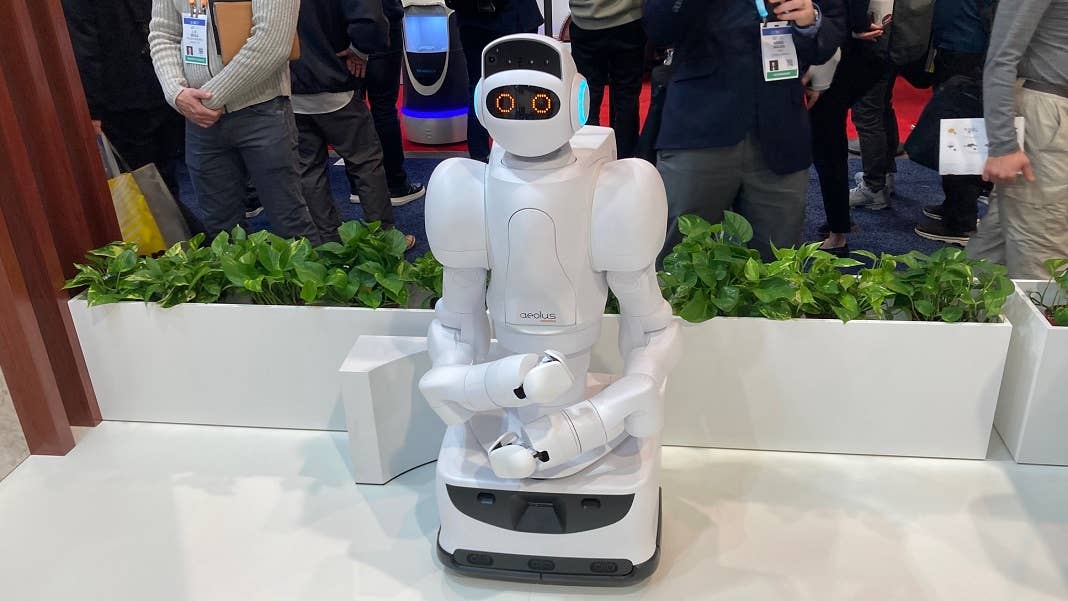
Share
Robots are already helping cook food, do construction work, clean homes, and more. In the future they’ll take over additional tasks—but which ones? At this year’s Consumer Electronics Show (CES) in Las Vegas, a plethora of robots with various purposes was on display. Some of them were silly, some ingenious, some a bit creepy. Not all of these will end up being widely used, but there's certainly a variety of jobs robots could do for us in the not-too-distant future. Here are a few of them, more or less in descending order from “most likely to be of use or have a positive impact” to “least necessary/just for kicks.”
Harvest Our Food
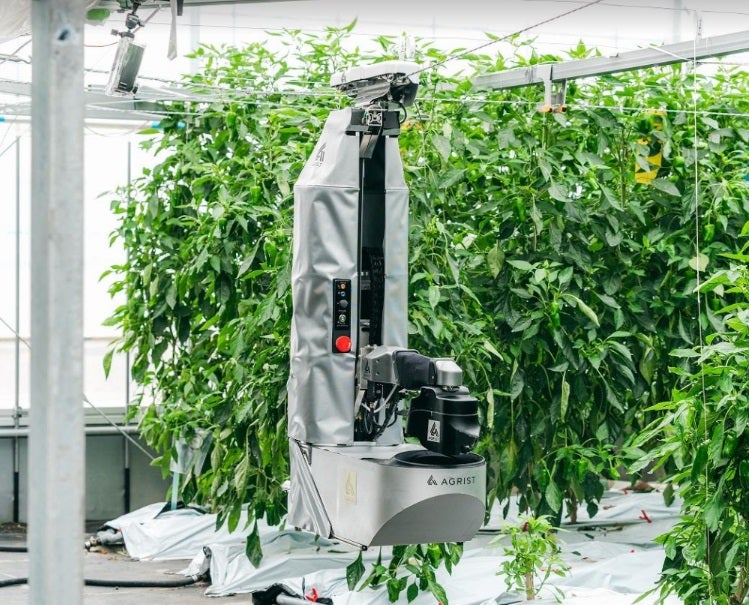
Image Credit: Agrist
Japanese agritech startup Agrist’s simply-named “L” robot can identify and pick harvest-ready bell peppers with millimeter precision and through thickly-layered leaves. A robot like this could be not just handy, but necessary if the current agricultural worker shortage continues. L uses cameras and an AI algorithm to identify a pepper’s position, size, maturity, and clipping point. It moves along suspension wires that need to be pre-installed, and can then approach a plant, find a target pepper, clip it off, then fold to drop it into a collection box. L can also forecast harvest volume and collect data about crops, such as the number of days left to reach maturity. Agrist says L costs less than $10,000, as compared to an average $73,000 for conventional automatic harvesting robots. The robot could likely be trained to harvest a variety of fruits and vegetables.
Plant Our Food
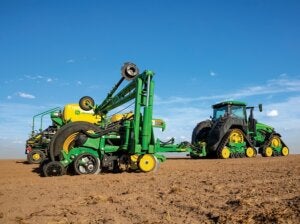
Image Credit: John Deere
In keeping with the agricultural theme, John Deere brought a highly functional farming tool to the show. The company says its ExactShot robotic planter can reduce the amount of starter fertilizer farmers use by more than 60 percent. It uses sensors to place starter fertilizer straight onto individual seeds as they’re planted rather than blindly spraying fertilizer over the entire row of seeds. Across the US corn crop alone, the company says, ExactShot could save over 93 million gallons of starter fertilizer annually—which would also prevent excess fertilizer from causing weeds to grow or leeching into local waterways.
Take Care of Us
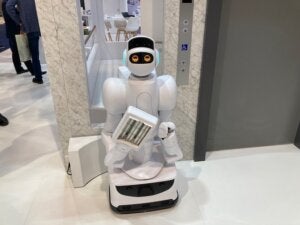
Image Credit: Vanessa Bates Ramirez
Aeo is a service robot made by Japanese company Aoelus Robotics. The company says its bot can be used for security, delivery, healthcare, and hospitality purposes. Aeo has two arms, one outfitted with grippers to pick up objects, open doors, or press buttons, and the other fitted with an L-shaped UV attachment to disinfect surfaces. Its 360° night-vision camera can monitor a home, office, or other space, and stream live video to your phone or laptop. Its Care function can detect when patients are in distress or at risk (details of how the robot does this are light). It’s relatively compact at 3.8 feet tall by 1.8 feet wide, and its arm can lift up to 8.8 pounds; so it won’t be helping any patients up if they fall, but it can bring them food, drinks, or other supplies. Aeo is already in use in airports, hotels, and hospitals in Taiwan, Hong Kong, and Japan.
Deliver Things to Us
Be Part of the Future
Sign up to receive top stories about groundbreaking technologies and visionary thinkers from SingularityHub.


Ottonomy wants to reduce the cost of deliveries by 50 percent with it Ottobot delivery robot. The tricked-out-box-on-wheels is about 4.5 feet tall, 4 feet long, and 2.5 feet wide, and weighs 200 pounds. It won’t win any races with a max speed of four miles per hour—that’s equivalent to the pace an average adult walks at—but depending where it’s coming from, its speed may not be all that important. The bot can do autonomous deliveries—where a door opens and a box is deposited on the ground—or attended deliveries, customer gets a text telling them the robot is there and a QR code to open the compartment. There’s a smaller compartment for things like wine bottles or other liquids, and a larger one that could hold groceries or food deliveries; the robot is customizable and modular, so customers can tailor its structure and compartments to their specific needs. It runs on a swappable battery and navigates autonomously through its environment.
Charge Our Electric Cars
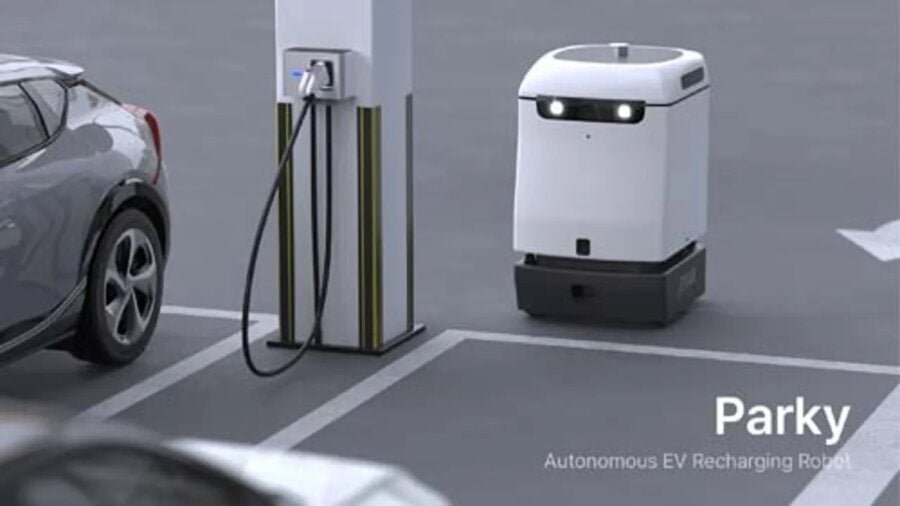
Image Credit: Evar
Evar’s Parky robot was made to help electric vehicle owners get their cars’ batteries recharged faster and with less hassle. As EV adoption grows, tools like Parky could become helpful as drivers try to navigate an as-yet-slim charging infrastructure. Rather than having to park at a charging bay, drivers can park anywhere in a lot and have Parky come to them. The bot provides 15kW DC charging per hour, juicing vehicles up with about 50 miles of range. The catch is that drivers still have to find a spot next to an “EV robot connector” and plug in, so depending on supply-demand ratios, Parky may not make much of a difference in terms of convenience and speed; the robot makes the most sense for buildings that want to make their parking lots more EV-friendly without undertaking construction or redesign work or having to add electric capacity.
Make Us Bubble Tea
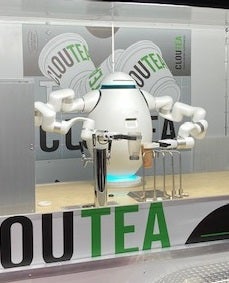
Image Credit: Vanessa Bates Ramirez
Richtech Robotics’ Adam robot has two arms with grip handles that can be customized to make various drinks. During CES the bot was churning out bubble tea; customers could choose a flavor on a touch screen and the robot would mix the necessary ingredients, add ice and boba, seal the cup, then deposit it on the counter for the waiting customer. Adam can perform bartending or barista duties as well. One thing Adam may want to work on, though, is speed; I stood in line to get a robotic bubble tea for about five minutes, and after not moving an inch, I left the line before even selecting a flavor. I’m all for automating bubble tea and other drinks if it’ll make them better, faster, or cheaper, but between the long wait and not having gotten to try the final product, I can’t quite vouch for Adam yet.
Banner Image Credit: Vanessa Bates Ramirez
Vanessa has been writing about science and technology for eight years and was senior editor at SingularityHub. She's interested in biotechnology and genetic engineering, the nitty-gritty of the renewable energy transition, the roles technology and science play in geopolitics and international development, and countless other topics.
Related Articles

These Robots Are the Size of Single Cells and Cost Just a Penny Apiece

AI Companies Are Betting Billions on AI Scaling Laws. Will Their Wager Pay Off?

Super Precise 3D Printer Uses a Mosquito’s Needle-Like Mouth as a Nozzle
What we’re reading